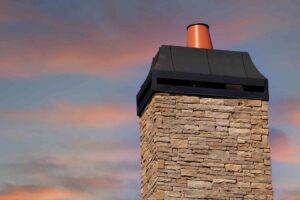‘A stitch in time saves nine’ – this idiom applies perfectly when it comes to duct cleaning. If you want to keep your home clean and healthy, duct cleaning is a must.
This article will help you understand how messy the process is, and what you can do to prepare, contain, and dispose of the dust and debris. You’ll also learn about the different cleaning methods and a post-cleaning checklist.
Preparation
Before you start cleaning, it’s important to prepare for the mess.
This means ensuring that all items in the area to be cleaned are removed, as well as any furniture that might be in the way.
It also means ensuring that the ventilating systems and dryer vents are turned off.
Once these steps are complete, you can begin the task of cleaning.
Vacuums and dusters should be used to remove dust from hard to reach places.
Make sure to wear a face mask, protective eyewear, and gloves to protect yourself from dust and debris.
Before starting any cleaning, it’s also important to ensure that all surfaces are clear of any obstructions.
Following these basic steps will help you prepare for the job and make sure the area is ready for the duct cleaning.
Containing the Mess
It’s important to contain the mess when duct cleaning, so you don’t end up with a huge mess afterwards. To do this, use a combination of compressed air and vacuum cleaning.
Compressed air will remove dust and debris from areas that are hard to reach with a vacuum cleaner. Vacuum cleaning will then remove the dirt and dust from the ducts and any other areas that have been cleaned.
It’s important that all the dust and dirt is removed from the ducts, as it can cause damage to the system if left behind. Make sure to cover any furniture or other items in the vicinity with plastic or cloth to prevent dust and dirt from getting on them. Additionally, use a HEPA filter vacuum cleaner to ensure that all the dust and dirt is removed.
After the job is done, be sure to use a damp cloth to wipe down any surfaces that may have been exposed to the dust and dirt. This will help keep the area clean and free from dust and dirt.
Disposal of Dust and Debris
Once the dust and dirt has been cleaned, it’s important to dispose of it properly. This means ensuring any debris removal is done in a safe and secure manner.
The method used to achieve this will depend on the duct access. For example, if the access is limited then a vacuum bag system may be the best solution. If access is more plentiful, then a vacuum and pressure system could be used.
In either case, the dirt and dust will need to be collected and disposed of away from the home. It’s important to store the debris and dust in sealed containers to prevent any contamination. Disposal should be done in accordance with the local regulations and guidelines.
Ultimately, it’s essential that dust and debris is removed from the home in a safe and secure manner.
Cleaning Methodology
Now that the debris has been removed, it’s time to focus on the duct cleaning methodology.
To start, safety precautions must be taken to ensure everyone involved isn’t exposed to any potential hazards. This includes wearing protective gear, ensuring proper ventilation, and keeping the area free of any combustible materials.
Additionally, the right type of equipment must be used and regularly maintained for the job. Vacuums, brushes, and other tools must be checked for wear and tear, and any broken or malfunctioning parts should be replaced.
Also Read: The Invisible Threat: Unveiling the Dangers of Dirty Air Ducts
Post-Cleaning Checklist
Once all safety measures have been taken care of and the equipment is properly maintained, it’s time to complete a post-cleaning checklist to ensure the job has been done correctly.
Check for the presence of any remaining dust, dirt, and debris in the ducts, and make sure all packaging materials are removed from the area.
An air duct inspection will ensure the air vents are free from any obstruction or blockage. It will also help you verify the air flow is unrestricted.
Additionally, ensure that all tools and equipment used during the cleaning process have been properly cleaned and stored away.
Finally, inspect the area for any remaining dirt and debris, and make sure the area is clean and free of mess.
Conclusion
Duct cleaning can be a messy job, but with proper preparation and the right tools, it doesn’t have to be.
By containing the mess, disposing of dust and debris, and using the right cleaning methodology, you can make HVAC duct cleaning an efficient and effective process.
Juxtaposing the mess with the efficiency of the process, you can now enjoy clean air and a clean space with minimal effort.




